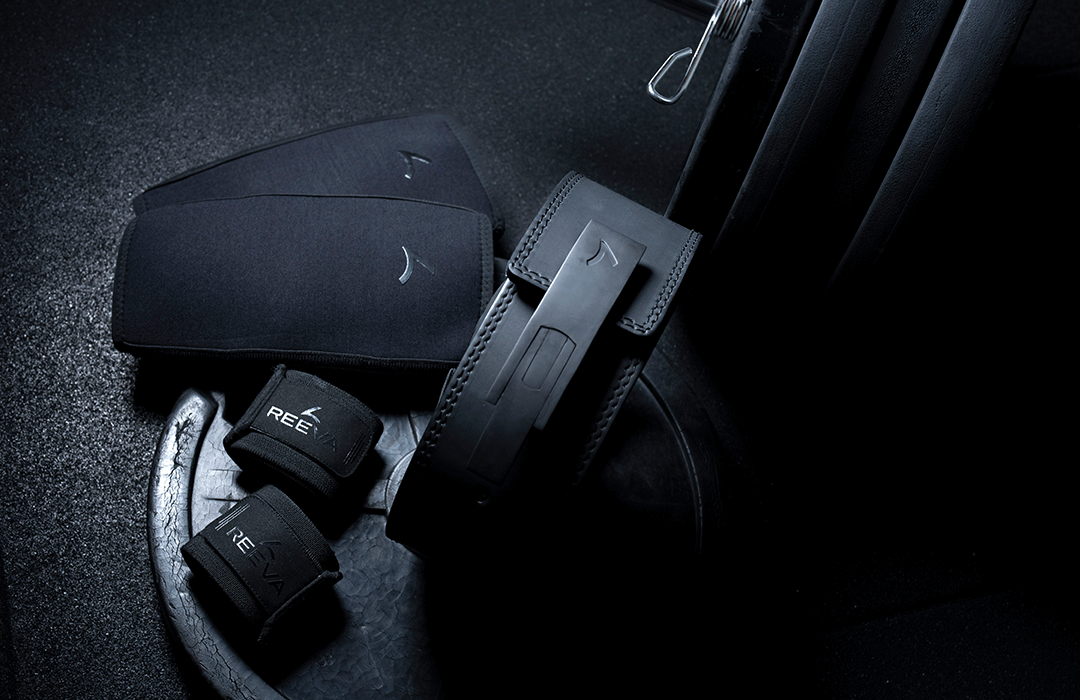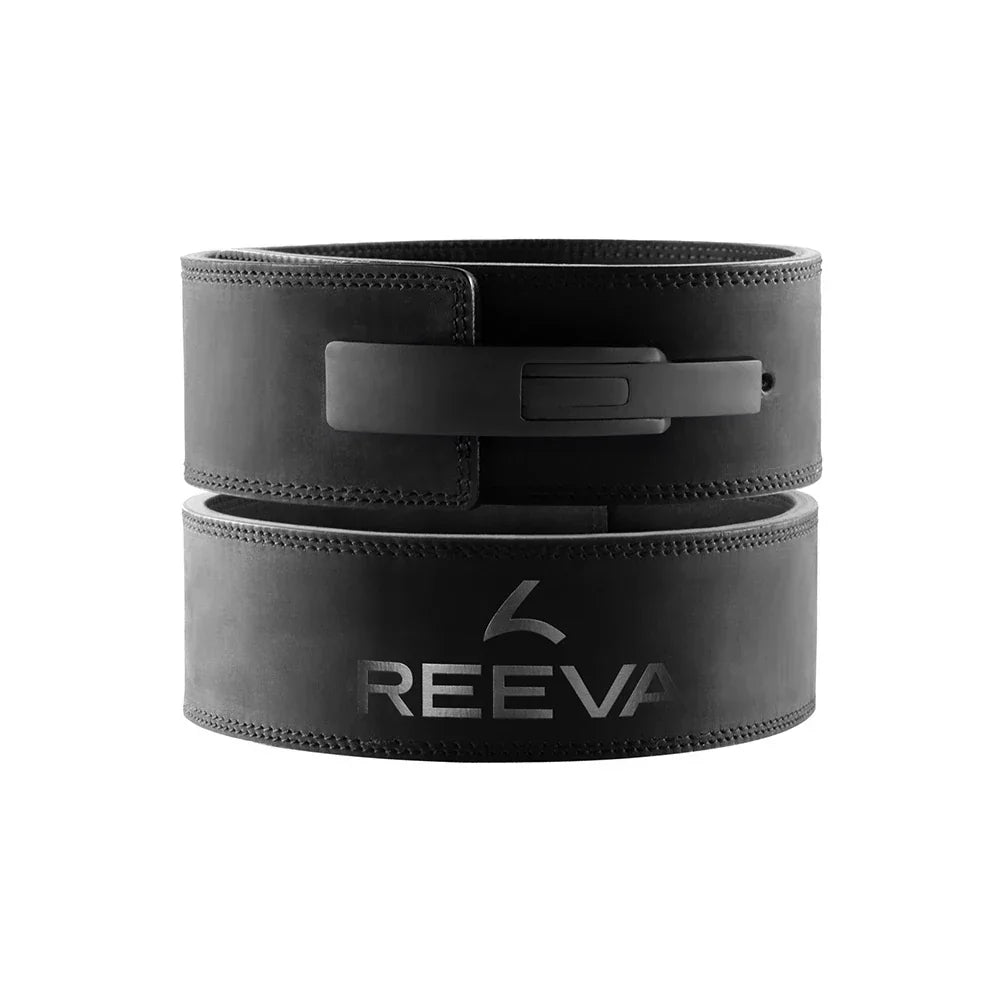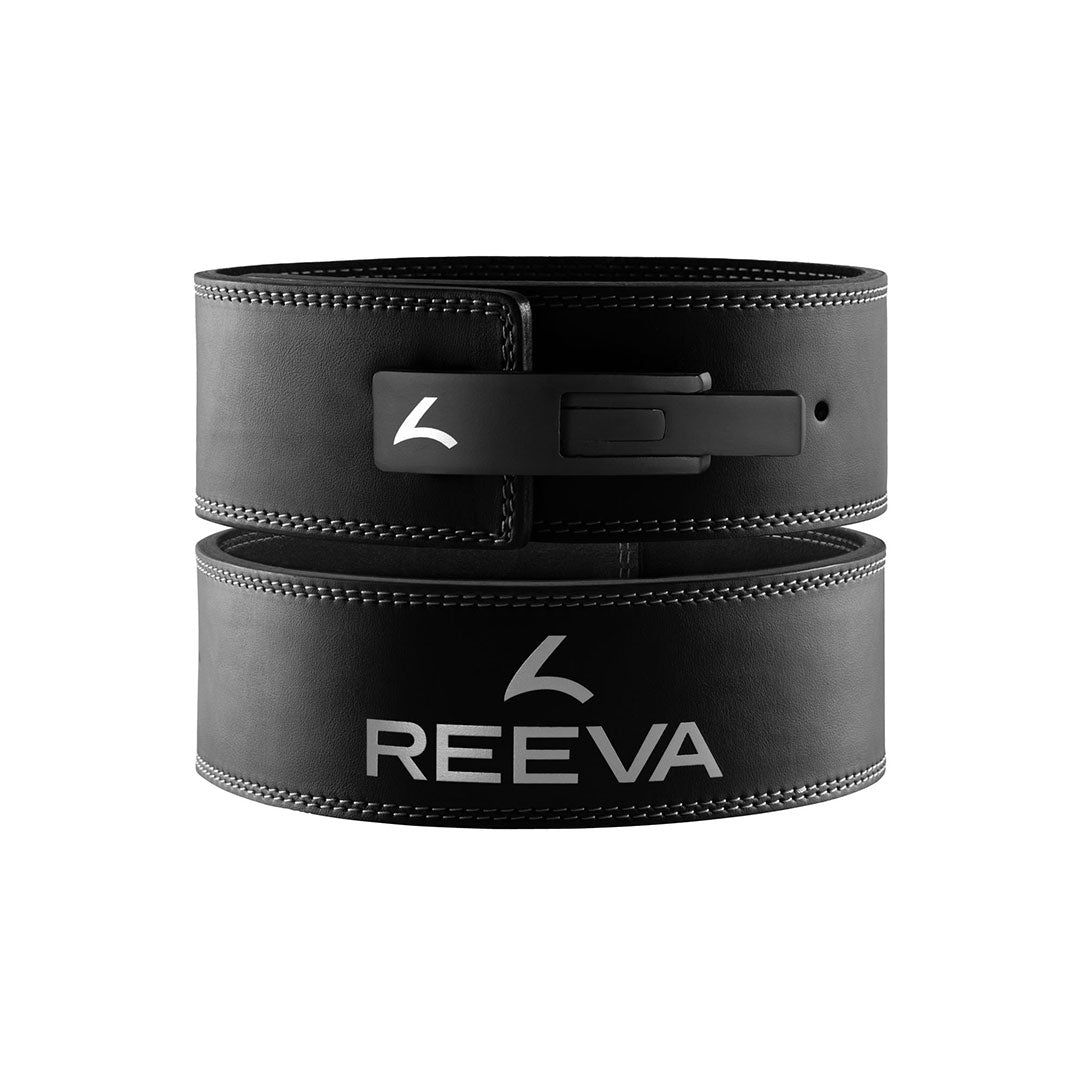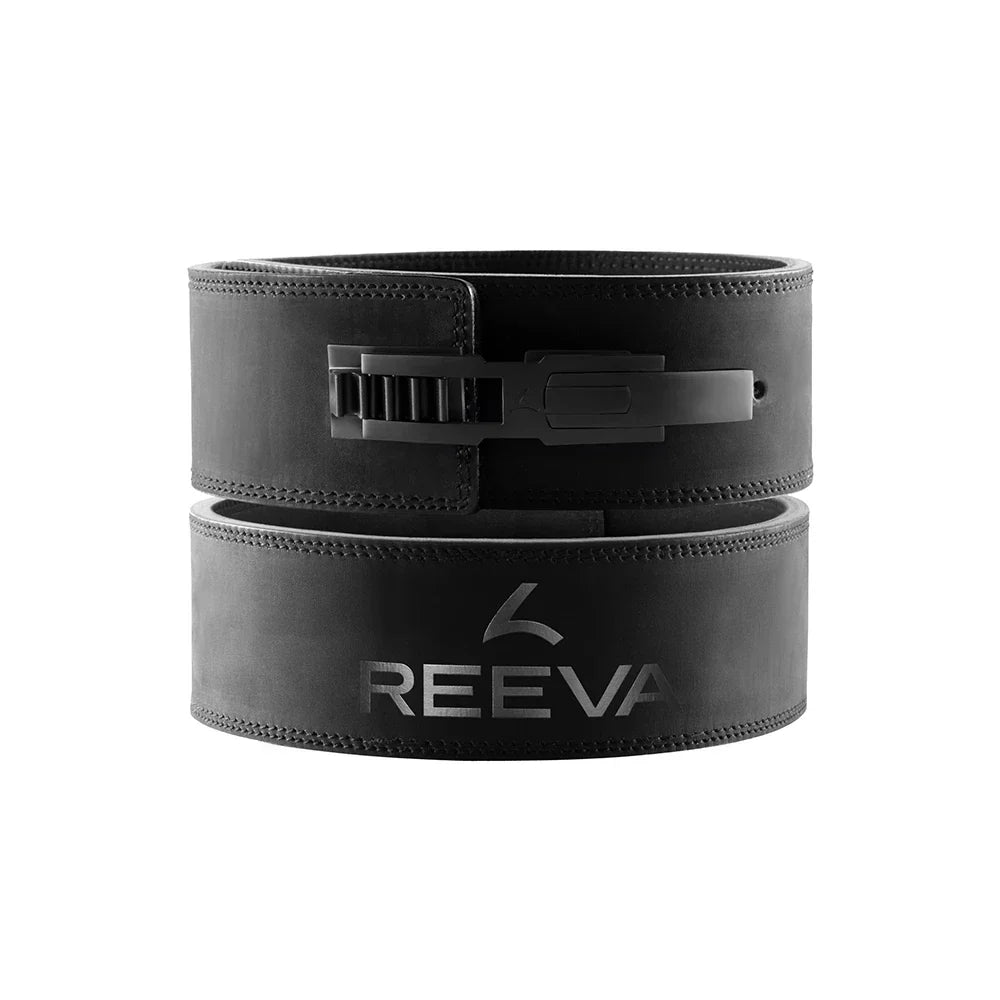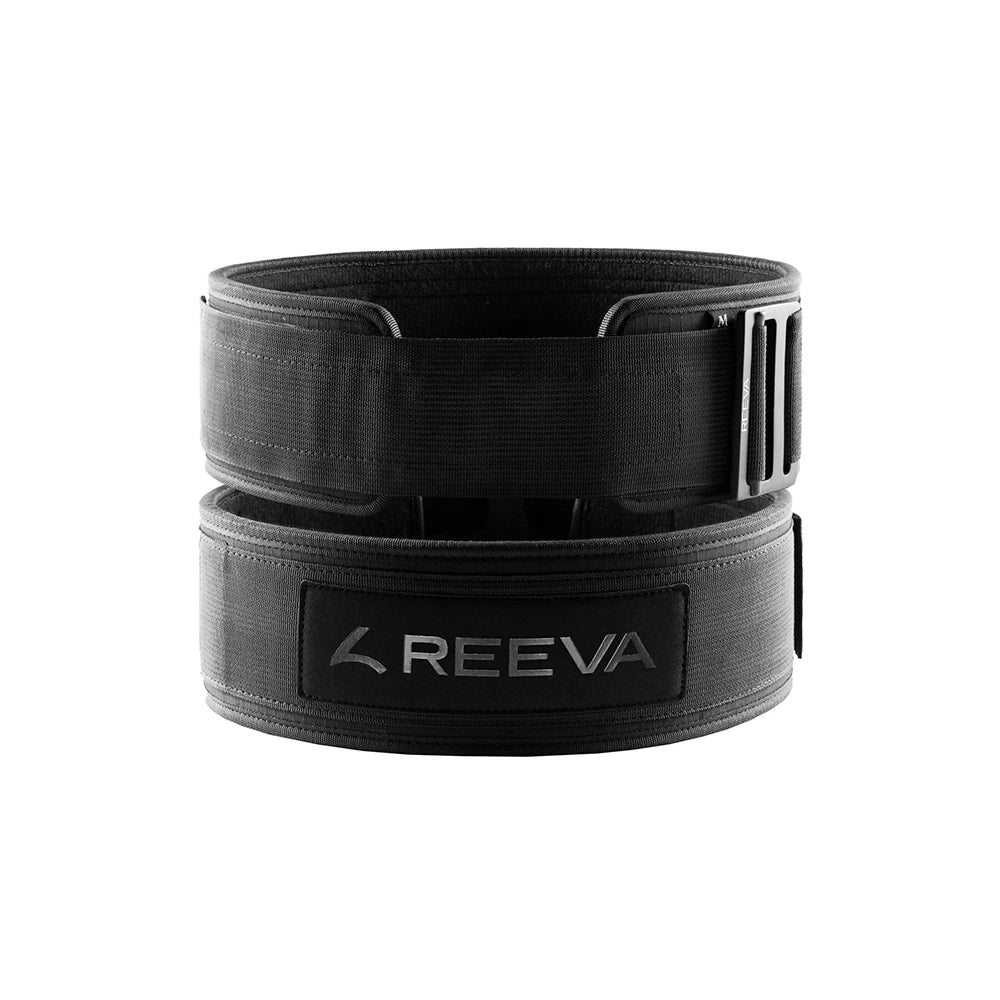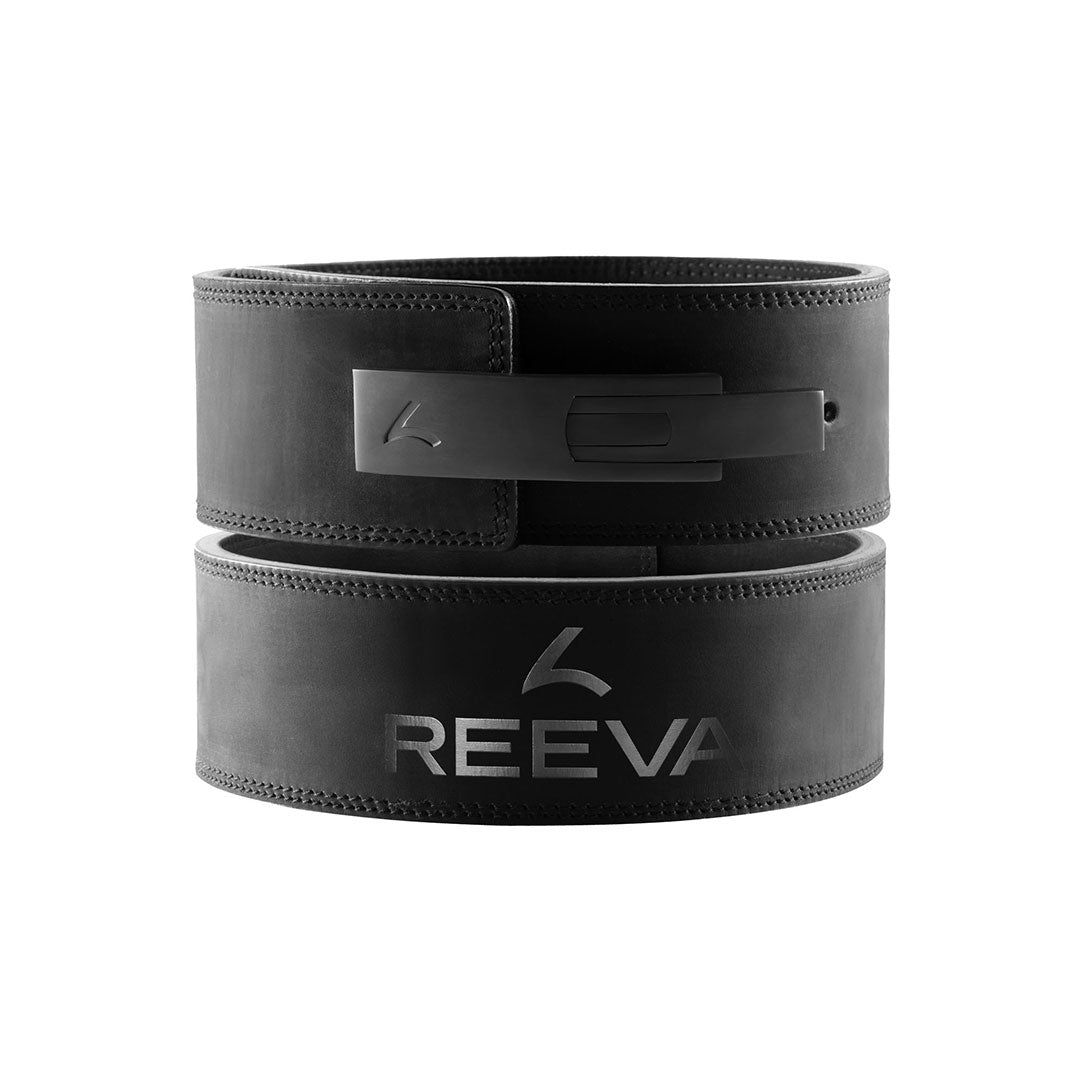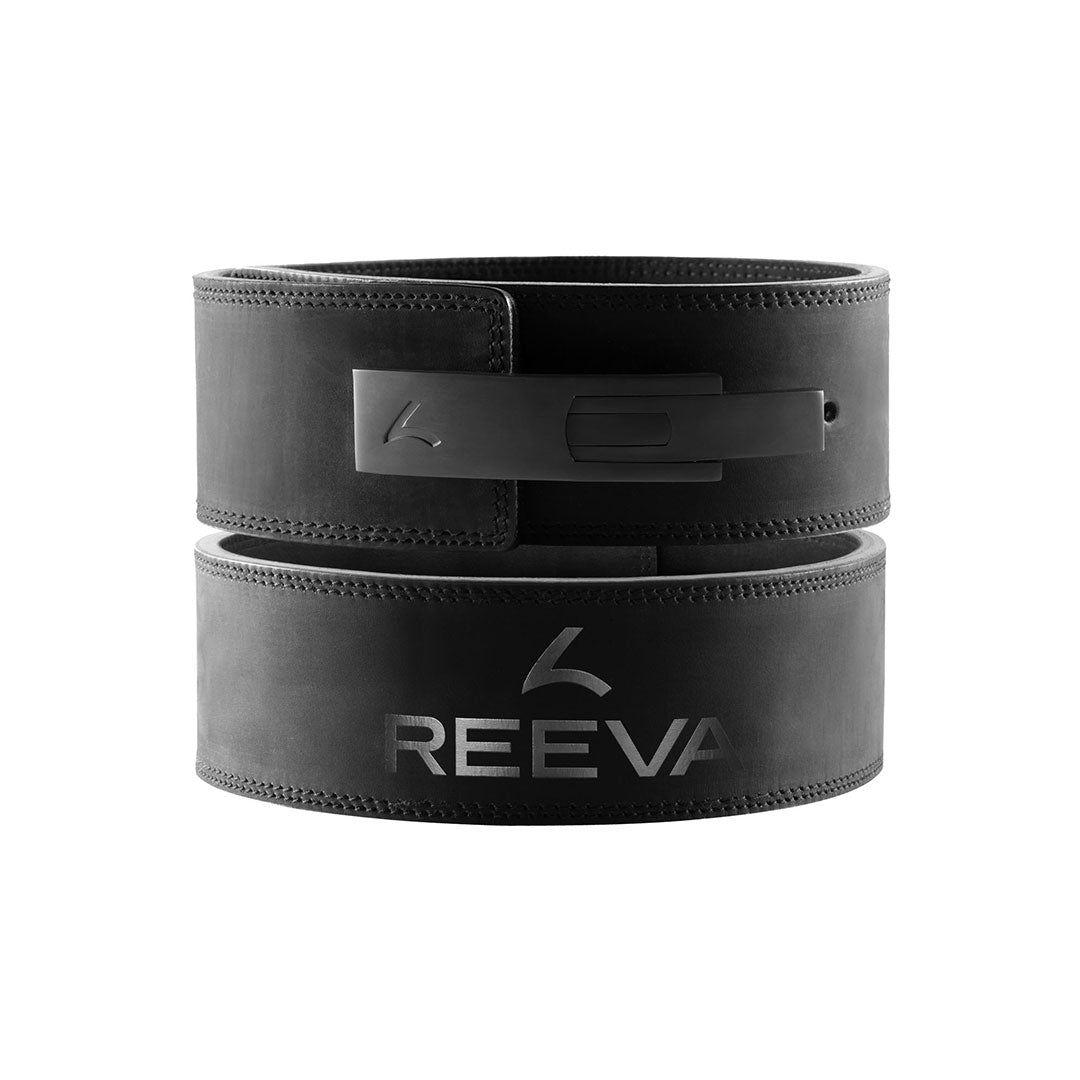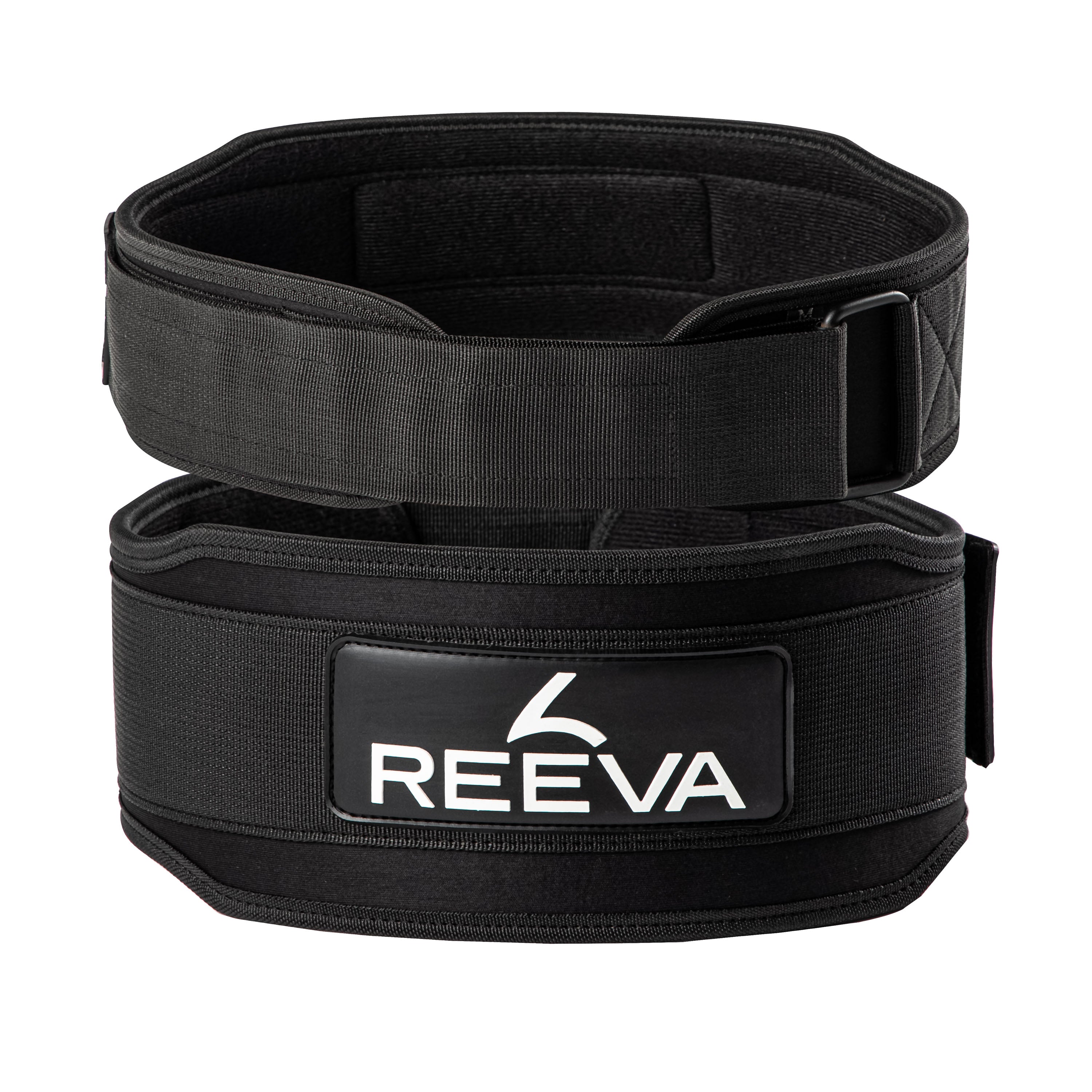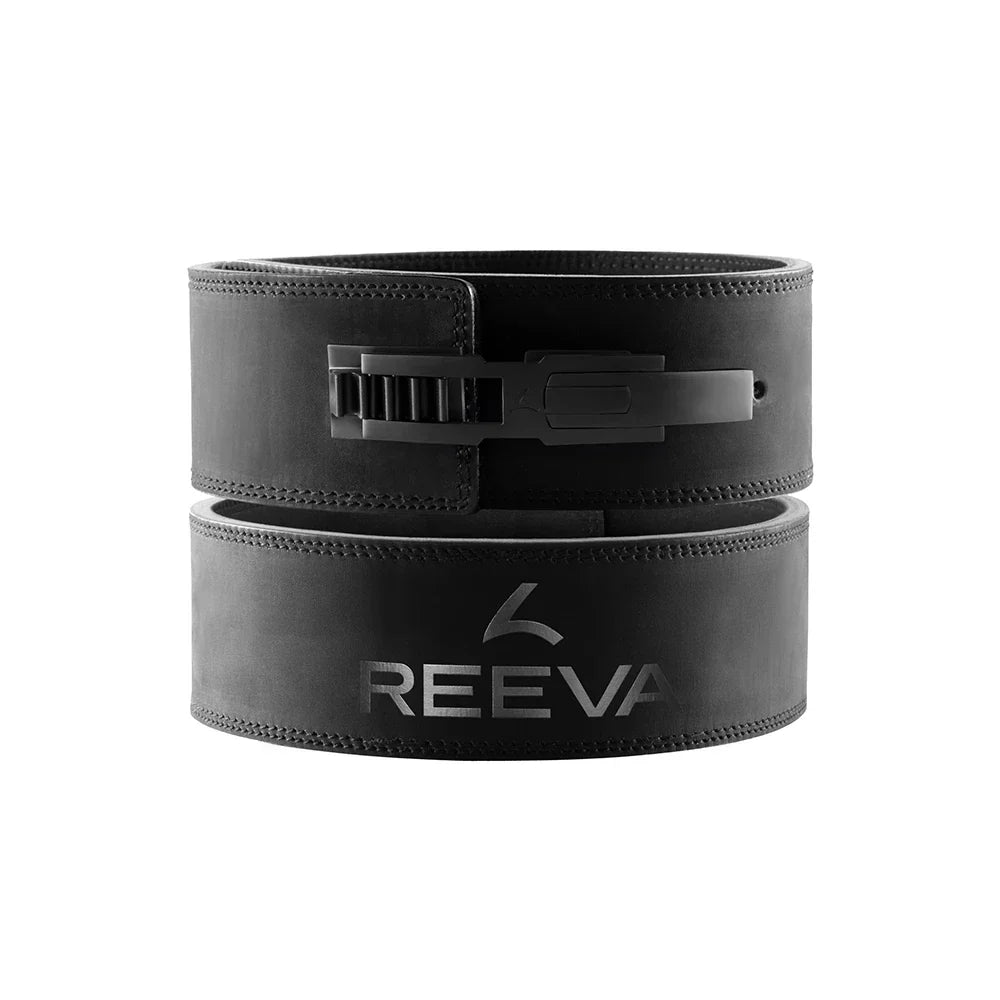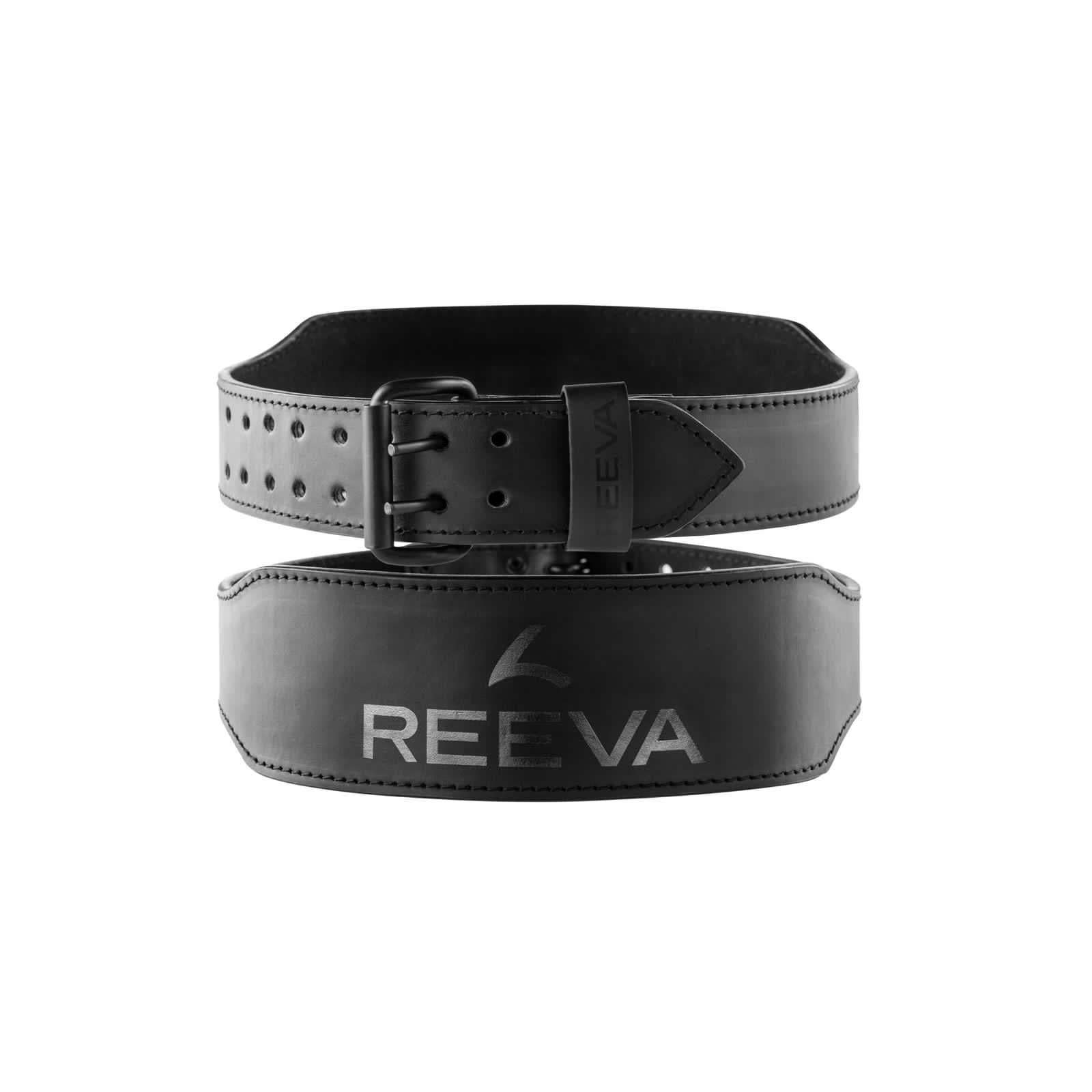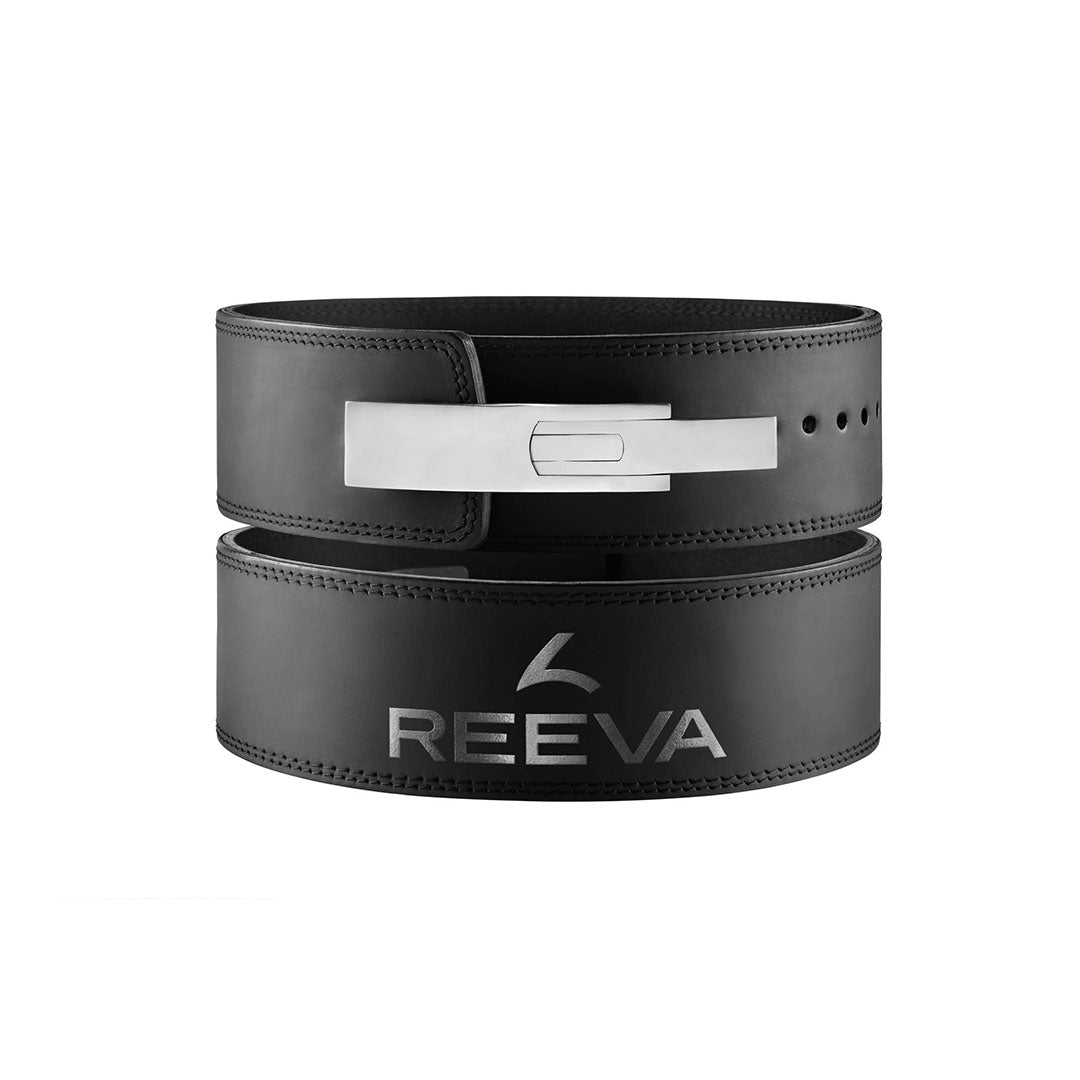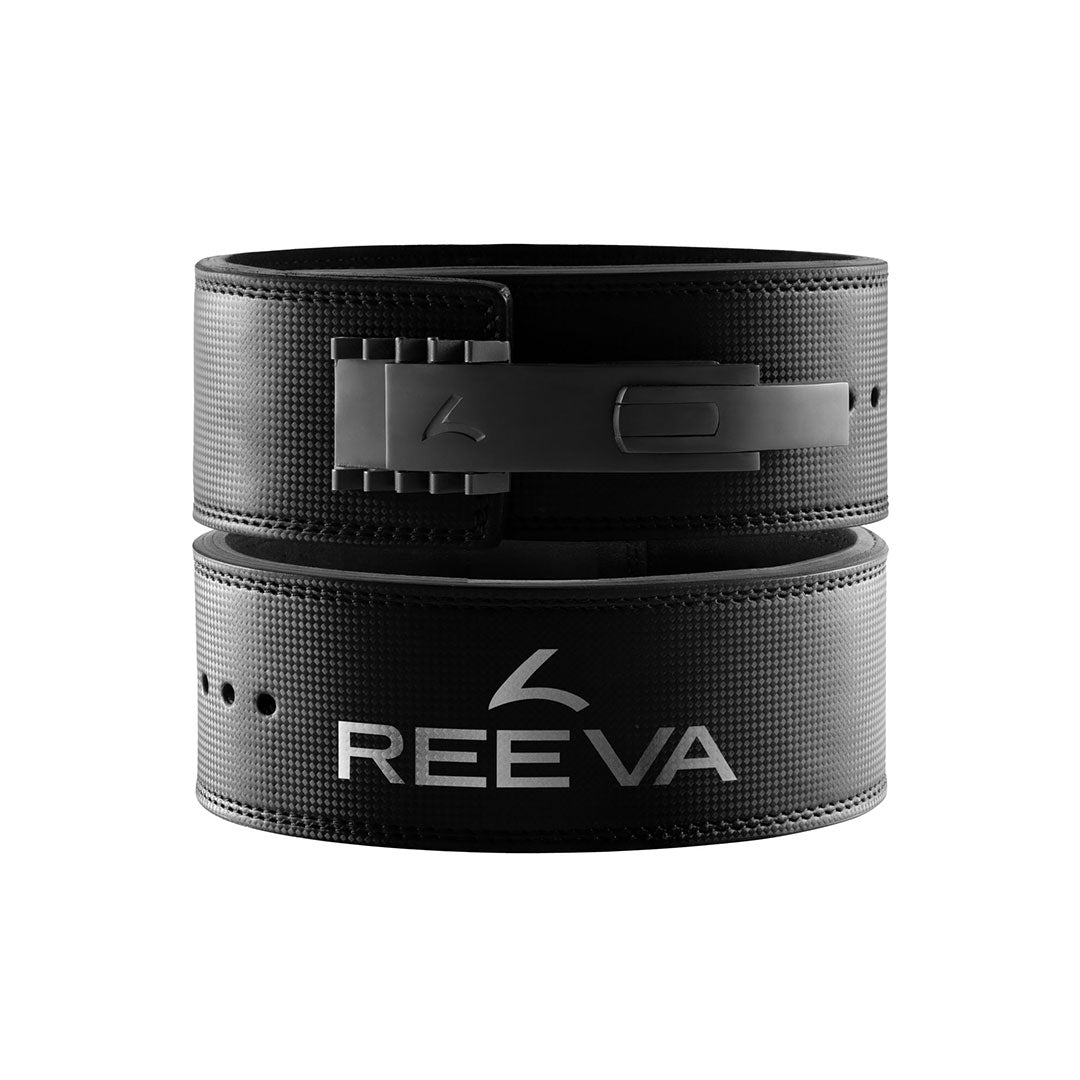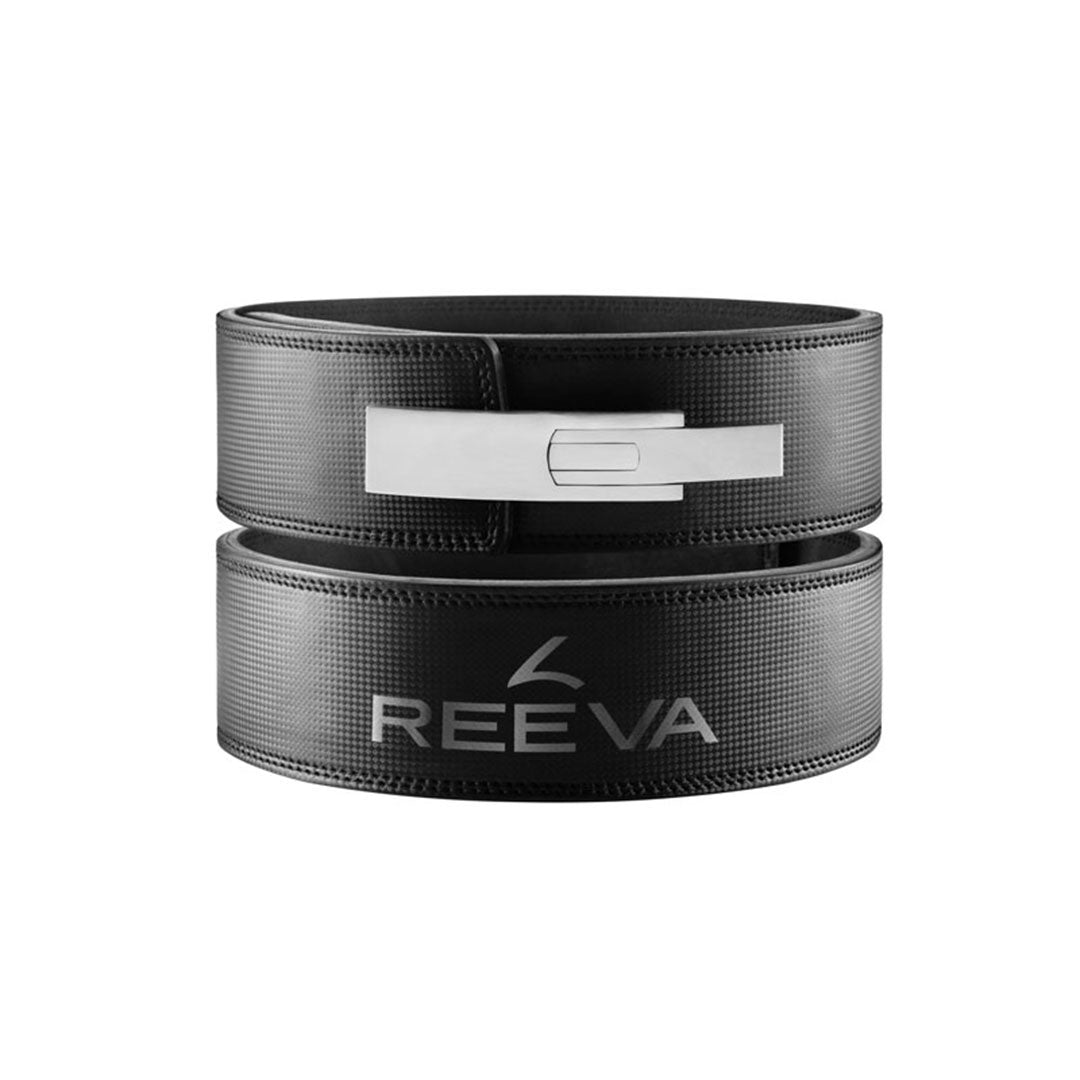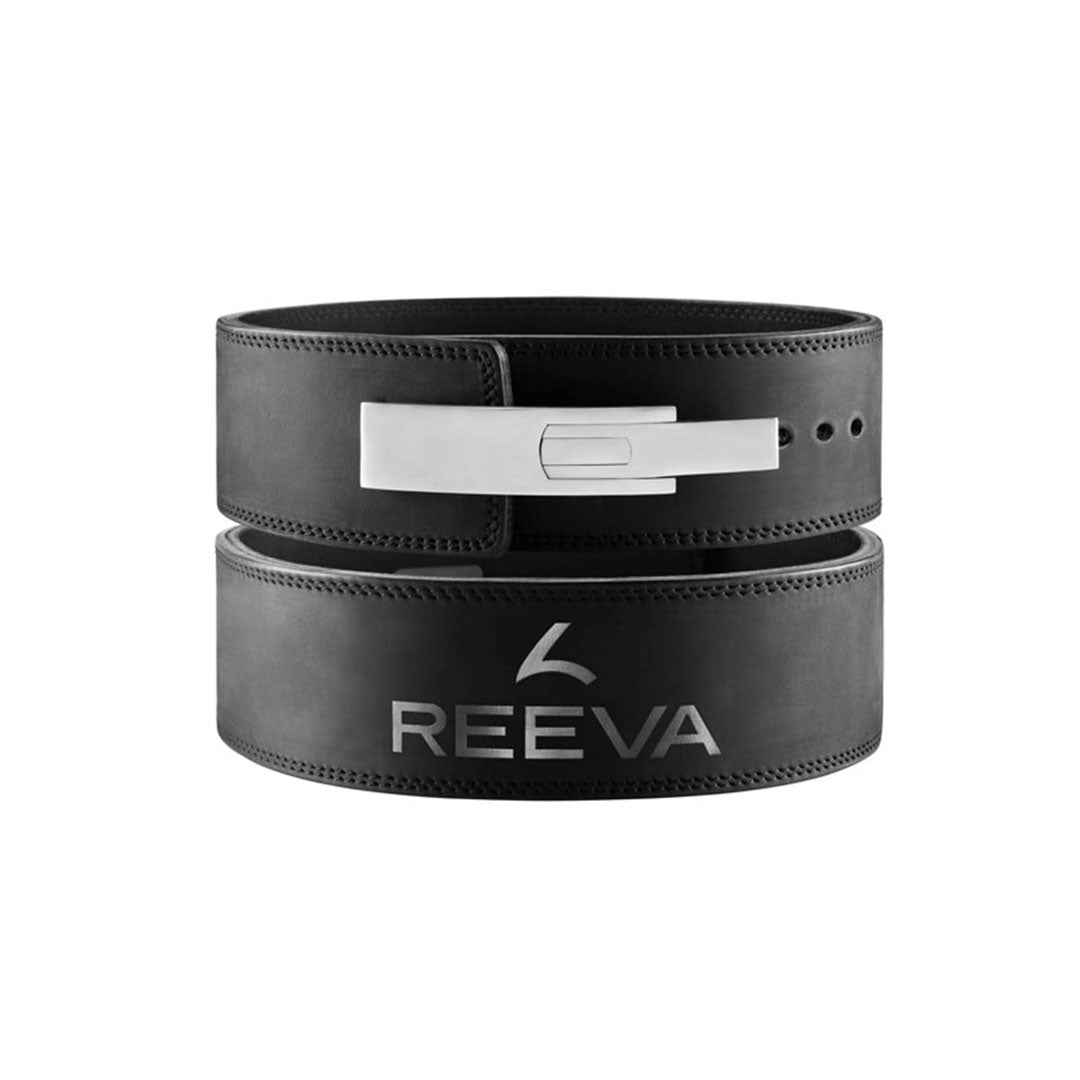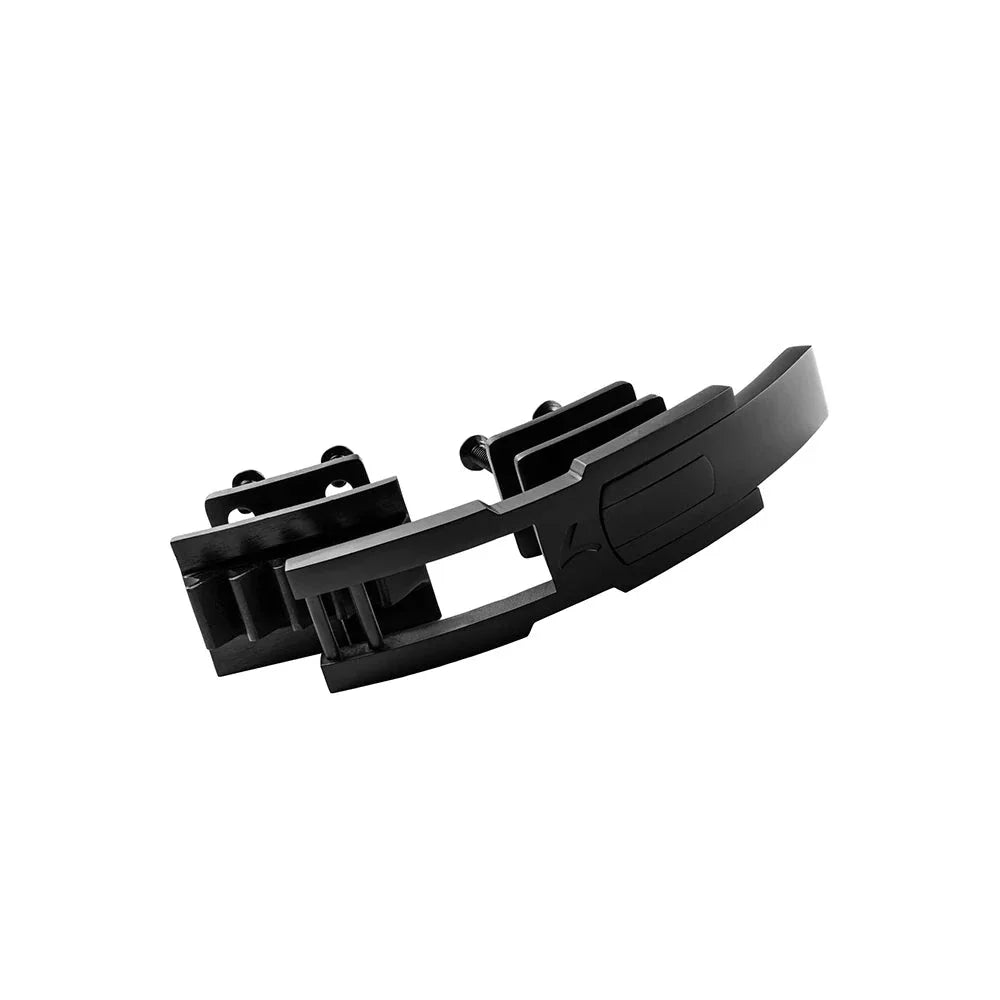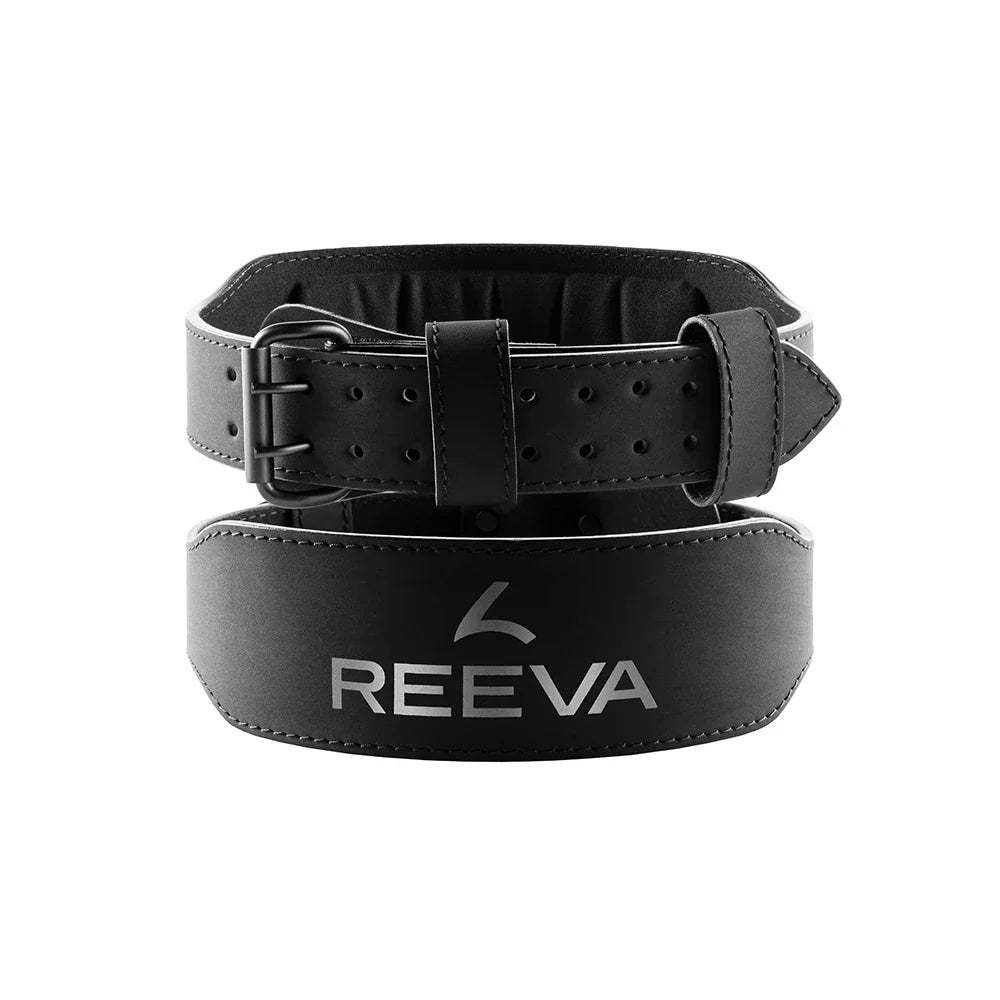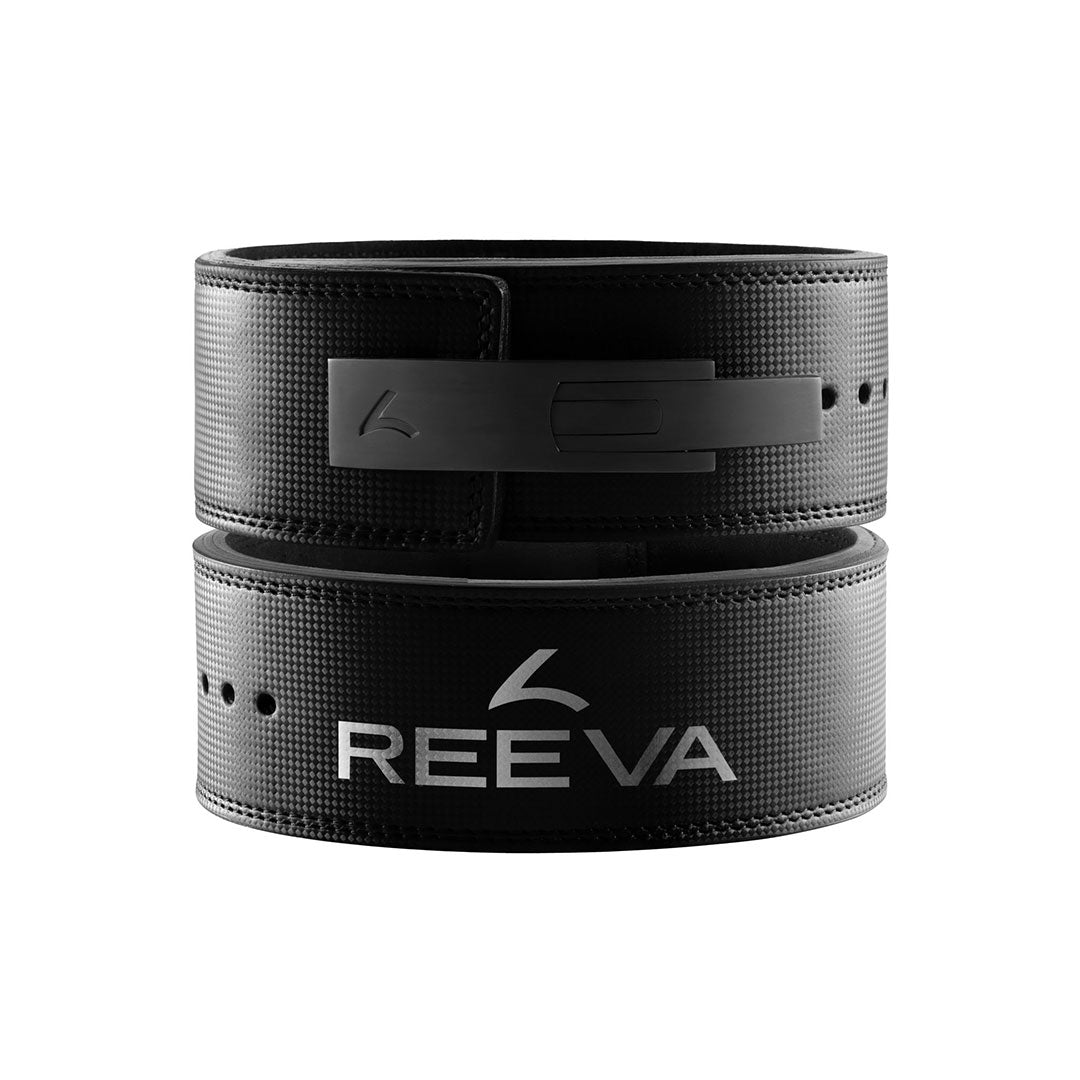Weightlifting Belts for Safety & Support
Elevate your lifting with Reeva’s premium range of weightlifting belts. Our collection of lifting belts is designed to enhance your performance and keep you safe during heavy workouts. Whether you’re a casual gym-goer or a competitive powerlifter, a quality weightlifting belt is an indispensable part of your gear. We’ve crafted our belts with top-grade materials and innovative buckle systems to provide unmatched core support, stability, and confidence for lifters of all levels.
What Is a Weightlifting Belt and Why Do You Need One?
A weightlifting belt is a thick, durable belt worn around your waist during heavy lifts like squats, deadlifts, and presses. Its primary purpose is to stabilize your lower back and core by increasing intra-abdominal pressure. This added support helps you maintain proper form and reduces the risk of injuries when lifting heavy loads. In fact, using a lifting belt can boost your strength – many lifters find they can lift 10% or more weight on big exercises with a belt, thanks to the extra core stability and confidence it provides. Over time, incorporating a belt into your training can lead to fewer back strains and a stronger, safer lifting experience.
Key benefits of using a lifting belt:
-
Injury Prevention: By bracing your core and spine, a belt helps prevent lower back injuries during heavy lifts.
-
Improved Performance: A belt can help you lift heavier weights or push out more reps by providing a more rigid torso and better leverage. Many lifters break through squat or deadlift plateaus after adding a belt to their routine.
-
Better Form: The pressure of the belt gives you a tactile cue to engage your core muscles. This reminder encourages proper form and technique on every rep, reinforcing good habits.
-
Confidence for PRs: Knowing you have extra support allows you to approach personal record lifts with greater confidence and focus. This mental boost can be just as valuable as the physical support.
A lifting belt isn’t a magic solution or a substitute for strong core muscles and proper technique. Beginners should first learn correct form and build baseline strength. But once you’re lifting near your body’s limits, the belt becomes a trusted ally in protecting your body and maximizing your power. It’s no surprise that from recreational lifters to Olympic weightlifters, so many athletes swear by their weight belts for safer, stronger training.
Choosing the Right Lifting Belt (Size, Thickness, and Type)
Not all lifting belts are the same. Choosing the right belt depends on your body, your lifting style, and your experience level. Here are a few factors to consider when selecting a weight lifting belt from our collection:
-
Thickness (10mm vs 13mm): Belt thickness affects the balance between support and comfort. A 10mm lifting belt (about 0.4 inches thick) is an excellent all-around choice for most lifters – it provides substantial support without being overly stiff. For example, our Buffalo Leather Lifting Belt (10mm) offers strong core stability for the average weightlifter. If you’re an advanced lifter or powerlifter handling extremely heavy weights, you might prefer a thicker 13mm belt for maximum support. Our 13mm options (such as the Nubik or Carbon Leather belts) are sturdier and more rigid, which can benefit experienced lifters aiming for top-end lifts. Keep in mind that thicker belts may require a longer break-in period and can feel tighter, so the choice ultimately comes down to personal preference and comfort.
-
Width: All Reeva belts have a uniform width of 10cm (approximately 4 inches), which is the ideal width to support your abdomen and lower back. This width is also the maximum allowed in many powerlifting federations, meaning our belts are competition-ready if you plan to compete.
-
Buckle Type (Lever vs Prong): We specialize in lever belts, which use a lever buckle mechanism instead of the traditional prongs. A lever buckle allows for quick, easy tightening and release – you can cinch the belt to the same tightness every time and pop it off between sets with minimal effort. This is especially convenient if you need to adjust your belt on the fly (for example, loosening it slightly after a big squat set or tightening it for a max deadlift attempt). Traditional double-prong belts are also effective, but they can be a bit slow to adjust and may wear the holes over time. Our Reeva lever buckles are made of high-strength metal and engineered to lock in securely for your heaviest lifts. They combine the best of both worlds: the security of a prong belt with the convenience of a lever. If you’ve never tried a lever belt, you’ll love how snug and supportive it feels without the fuss of threading a buckle pin through holes mid-workout.
-
Material: Reeva offers belts in premium materials like genuine leather as well as high-quality synthetics. Leather belts (such as our buffalo leather and Nubik leather models) mold to your body over time and are extremely durable – these are ideal for serious lifters seeking long-term performance. We also have a microfiber belt and other fitness belts made from advanced synthetic materials that provide excellent support with a lighter, more flexible feel. No matter which material you choose, all our belts undergo strict quality testing to ensure they can withstand years of intense training.
-
Size & Fit: It’s crucial to get the right size for your waist. Our belts come in sizes from XS to XL, covering a wide range of waist measurements. For the best fit, measure your waist around your belly button area (not where your pants sit) while standing relaxed. Each belt has multiple adjustment holes or an adjustable lever range to fine-tune the fit. If you’re between sizes, we generally recommend choosing the smaller size for a snug fit. And remember, you might wear your belt over a training hoodie or lifting suit, so allow a bit of extra room if needed. The goal is a belt tight enough to support and cue your core, but not so tight that you cannot comfortably breathe or brace.
Our quality promise: No matter which Reeva lifting belt you choose, you can count on superior craftsmanship and durability. We use heavy-duty stitching and reinforced buckles in all our designs. Our belts are built to last through countless workouts – in fact, we back them with a 1-3 year warranty (depending on the model) because we trust their quality. We’ve tested our powerlifting belts extensively to refine their shape and function, ensuring they meet the high standards of competitive lifters and casual strength trainers alike. The result is a collection of belts that are comfortable, reliable, and suitable for athletes of all sizes.
Benefits of Using a Lifting Belt
Wearing a lifting belt can be a game-changer for your training. Here’s why adding a belt to your gym bag is a smart move:
-
Stronger Lifts: A belt reinforces your core, acting like an external support for your abdominal and lower back muscles. When you take a deep breath and brace against the belt, you increase intra-abdominal pressure significantly. This creates a more rigid torso and can help you handle heavier weights than you could beltless. Many lifters report instant improvements in their squat and deadlift numbers once they start using a belt – it’s not uncommon to see a boost of 5–15% in its aid for 1RM lifts or the ability to squeeze out a few extra reps.
-
Reduced Injury Risk: Perhaps the biggest reason to use a weightlifting belt is injury prevention. Heavy compound lifts put tremendous stress on your spine and surrounding muscles. A belt acts as a safety net for your lower back – it helps keep your spine in a safer neutral position and reminds you to engage your core muscles. By doing so, it decreases the likelihood of lower back rounding and other form breakdowns that can lead to injuries. Think of the belt as an extra layer of core muscle: it won’t do the job for you, but it will support you in maintaining proper form under maximal loads.
-
Better Core Engagement: Ironically, wearing a belt doesn’t mean you’re “cheating” or not using your core – in fact, it can help you learn to use your core more effectively. Pushing your abs outward against the belt teaches you how to brace properly. Over time, this can translate to stronger abdominal and oblique muscles, improving your natural lifting form even when you’re not wearing the belt. The belt provides feedback, so you know you’re braced correctly.
-
Confidence and Mental Focus: There’s a huge mental component to attempting big lifts. Strapping on a sturdy belt around your waist has a psychological benefit – it makes you feel secure and ready. This boost of confidence can help you approach a heavy barbell with the mindset that you’re going to dominate it. When you’re not worrying about your back because you know the belt has you supported, you can focus 100% on execution. This often results in a more explosive and controlled lift. As you start hitting new PRs thanks to your belt, your overall training confidence will grow.
In short, a quality lifting belt is a must-have for anyone serious about strength training. It’s an investment in your safety and progress. By reducing injury risk and enabling you to lift heavier weights safely, a belt allows you to train consistently over the long term – and consistency is the real key to reaching your fitness goals. Just remember that a belt is a tool to augment good form, not replace it. Continue to strengthen your core with auxiliary exercises, and use the belt when you’re going near your limits or want an extra margin of safety.
How to Use a Lifting Belt Properly
Using a lifting belt is straightforward, but there are some best practices to ensure you get the most out of it:
-
Positioning: Wear the belt around your natural waist, roughly in line with your belly button. It should cover the space between your rib cage and hip bones. The belt might sit a bit higher on your torso than where you wear casual pants – this is normal. Many lifters center the belt so that it covers the lower back and the front abdomen evenly.
-
Tightness: Cinch the belt snugly but not so tight that you cannot breathe or brace. A good rule of thumb is to tighten until you feel firm resistance against your abs when you breathe out and flex, but not so much that it’s painful or pinching. You should be able to fit a finger between your body and the belt. Lever belts make adjusting tightness easy – if it’s your first time, try different tightness settings to find what feels supportive yet comfortable.
-
Timing: Use the belt primarily for your heaviest sets or most demanding exercises. For example, wear it for heavy squats, deadlifts, Olympic lifts, or even heavy overhead presses. You don’t need to wear a belt for every set or for isolation exercises like bicep curls. Many lifters warm up beltless and then strap up when the weight gets heavy enough that they need the extra support. Over-reliance on the belt for every set isn’t recommended, as you still want your core to develop strength on its own.
-
Breathing & Bracing: Take a deep breath into your belly before you initiate a lift, and push your abdominal muscles out against the belt. This expansion is what creates intra-abdominal pressure and a stable core. Hold that breath and tight core throughout the strenuous part of the lift (the Valsalva maneuver), then exhale and reset at the top or end of the lift. Avoid shallow chest breathing – the power of the belt comes from breathing “into your stomach” and bracing hard.
-
Don’t Overdepend: Remember that a lifting belt is not a substitute for proper form or a license to lift with a weak core. Continue to train your core with planks, dead bugs, and other exercises so that you have a strong foundation. Use the belt as an aid for maximal or near-maximal lifts, not as a crutch for poor technique. If you’re new to belts, consider consulting a coach or experienced lifter to ensure you’re using it correctly. When used right, a belt will enhance your form — but if used incorrectly (too loose, too tight, or without bracing), it won’t provide much benefit.
By following these guidelines, you’ll ensure that the belt works for you and not against you. When you first start using a belt, it may feel a little foreign, but you’ll quickly get used to the added support. Soon, you might wonder how you ever lifted heavy without one! Just like any other piece of equipment, integrate it into your routine gradually and listen to your body. With time, a lifting belt will become a natural part of your lifting sessions, helping you stay safe, strong, and confident as you push your limits.


